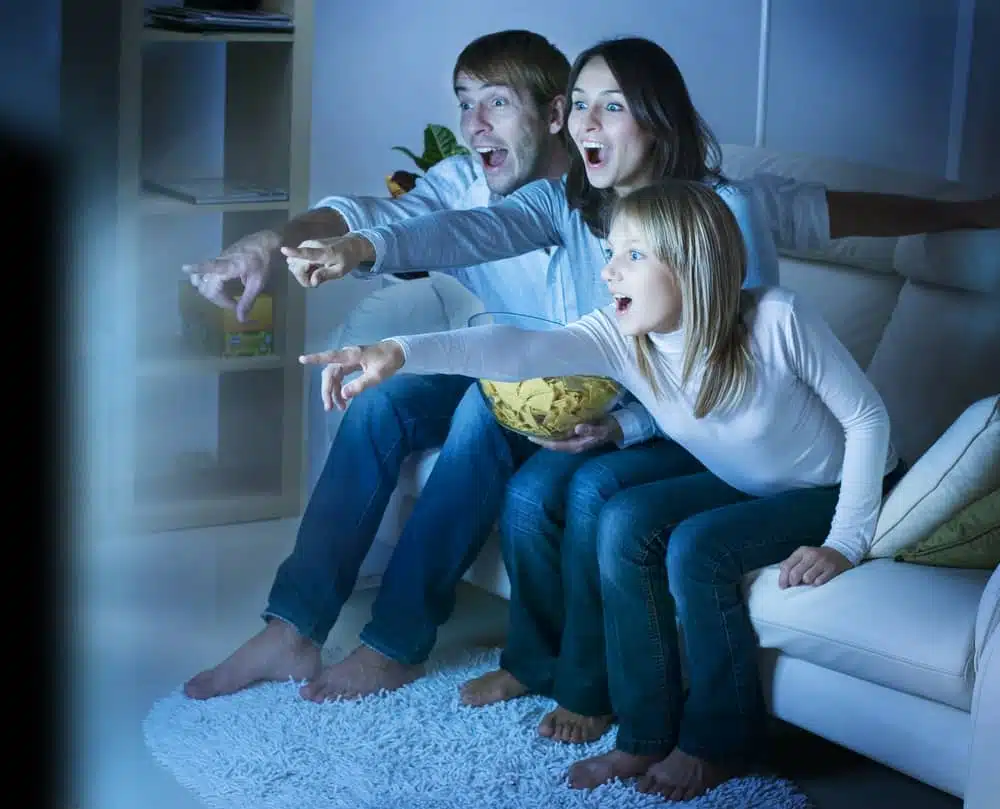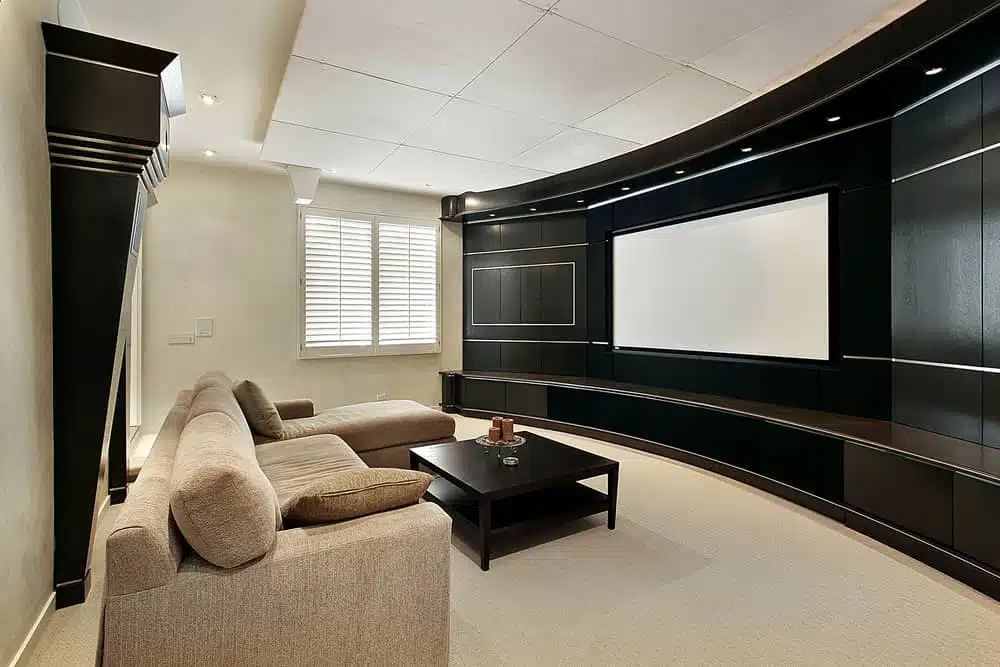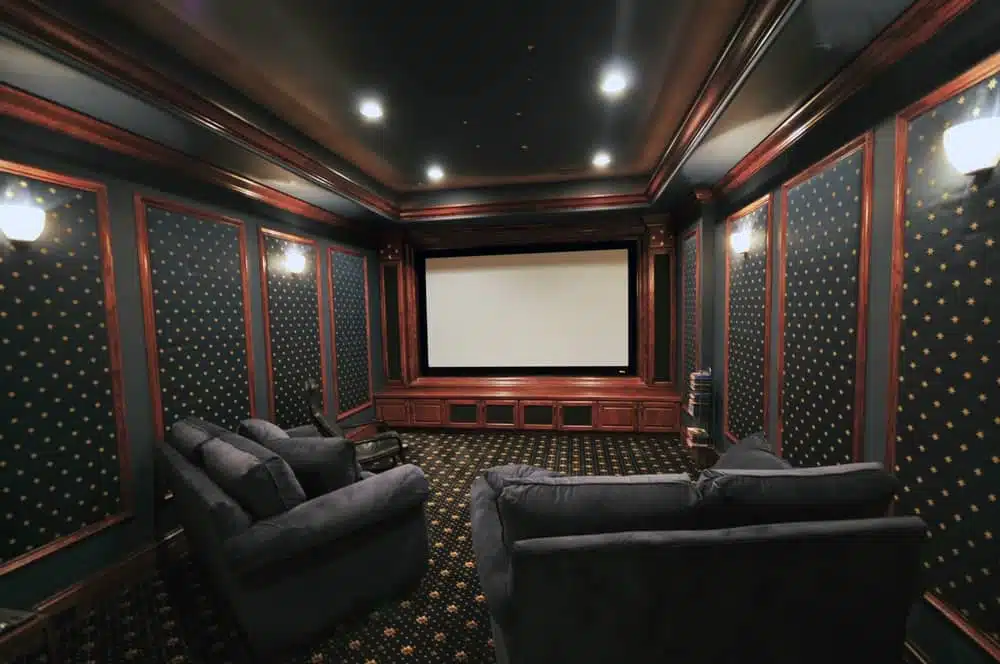Whether you intend to build a dedicated theater room or upgrade your regular living room movie night, you may think, “What is the best home theater setup that will suit me?” Watching the newest blockbusters is the perfect way for a movie enthusiast to spend a weekend. After all, who doesn’t enjoy seeing movies in a theater with a big screen and surround sound?
There are numerous approaches to creating a fantastic home entertainment system. You can go the usual method and get an AV receiver and several speakers. A home theater starter kit is available for purchase too. You may get a soundbar and later upgrade it to a wireless surround sound system by including a wireless subwoofer and satellite speakers.
Bring the theater inside your home thanks to modern technology. You may enjoy all the benefits of a movie theater without crowded spaces and uncomfortable chairs, with high-quality audiovisual equipment and seating designed for home theater setups.

These are the basics to achieve the best home theater setup for the ultimate movie night experience at home.
Location of Display Screen
The main feature of your home entertainment system is the enormous display screen. For a cinematic experience, the screen size is just as crucial as the projector’s performance. However, selecting a screen that is too large will require you to move your head from side to side to see everything happening.
You must find a screen appropriate for your room’s dimensions and home cinema seating configuration. One of the frequent errors we encounter when setting up a home theater is not considering this. The screen can be placed on a wall, a ceiling, or even the floor, depending on your needs.
The best display for your entertainment room should be selected using the following considerations:
- The screen elevation in the home theater room should be around one-third of the distance between the display and the seats. Place it between 24 and 36 inches off the ground because a 15 to 20-degree vertical angle provides the best viewing.
- Make sure the screen is mounted on a wall away from a source of direct sunlight.
- Another crucial component that has the potential to have a significant impact on your viewing experience is the gain or reflective quality of a display screen.
- A high-gain model should be avoided since it may produce hotspots of intense light in the middle of the screen when viewed from the sides.
- The best displays for low-cost and basic home theater setups are manual pull-downs. These are simple to hang on the wall. They conserve room because they are retractable.
- Fixed screens can keep their surface tension comparatively tighter, producing a smooth and clear image. They may be a little pricey.
- Alternatively, you might paint drywall matte white to make a fixed-frame screen. A matte paint wall screen can produce good image quality for a lot less money.
Location of Projector
It can be pretty challenging to choose the ideal location to mount the projector. The distance between a projector and a screen, the throw distance, must be appropriate for the projector. This can change based on your projector’s model and manufacturer.

Here are some tips for choosing the projector’s placement in your home theater setup:
- Place the projector in the middle of the space for the finest images. Nevertheless, watch out for obstructions because the projector light needs a clear path to reach the screen.
- Heat is a common issue with projectors. To prevent heat accumulation, ensure yours is mounted in a well-ventilated place. The lifespan of a projector bulb is frequently shortened by overheating.
- The ceiling or a wall is the ideal surface to mount a projector. It will receive sufficient ventilation from all sides in either scenario. It will also have a distinct projection line.
Arrangement of Sound System
A high-definition sound system can create an exceptional audio experience. Before installing the sound system, you must consider the noise control guidelines established by your local government.
A 5.1 surround sound system is the standard audio setup in a home theater. If the local laws allow it, you might choose a more advanced system like 7.1 surround sound.
The following considerations should be made when arranging the sound system:
- Put the woofer, three speakers, and three speakers closest to the front of the room if you’re utilizing a 5.1 surround sound system. A little bit behind your home theater seats is where the other two speakers should go.
- Using a 7.1 system, the sixth and seventh speakers should be arranged directly behind the audience. The remaining configuration is identical to a 5.1 system.
Arrangement of Seats
A comfortable and the best home theater experience requires the right seating arrangement. The first thing to consider is how many people can comfortably fit in your cinema room.
Depending on your audience, the size, shape, and color of the seating in a media room can change. For home theater setup, you may need to add unique seats. For instance, if you have children, the media room may require small seats with vibrant seat covers.
Choosing the Right Location
Although you may turn any room in the residence into a home theater, much will rely on your needs and budget.
The best places to set up a home theater are the garage, lawn, spare bedroom, or living room.
But it takes a significant time and financial commitment to build a media room. Therefore, it’s critical to comprehend the many advantages and difficulties associated with converting each of these spaces into a fantastic media room.
Living Room
If you frequently have guests around for movie night, the living room might be a terrific home theater place.
The largest room in your home typically has plenty of space for huge gatherings. Your living room can be transformed into the ideal location for an enhanced movie experience with your built-in home theater elements.

Attic
A home theater setup may be a terrific addition to even the smallest unoccupied attic.
If you have a choice between two rooms, pick the one with the fewest windows and doors. The space should be rectangular, enclosed, and silent. It shouldn’t interfere with other household activities because loud music and movies annoy neighbors.
Backyard
Watching a movie outdoors in your backyard rather than inside can be far more interesting. However, creating a home theater setup in your backyard is undoubtedly more difficult than creating one in your living space.
However, you may host a movie night for many friends by converting your backyard into a home theater. It offers the perfect backdrop for birthday celebrations or informal corporate meetings.
Conclusion
A home theater may be the ideal location for a great night out with friends and family. Thanks to inexpensive home theater technology, you can turn a spare room into a cutting-edge movie room without blowing a fortune.
However, setting up a home theater is not a simple operation. The process can be very taxing and requires careful planning. Fortunately, you can successfully achieve the best home theater setup with the correct preparatory advice and practical suggestions.
